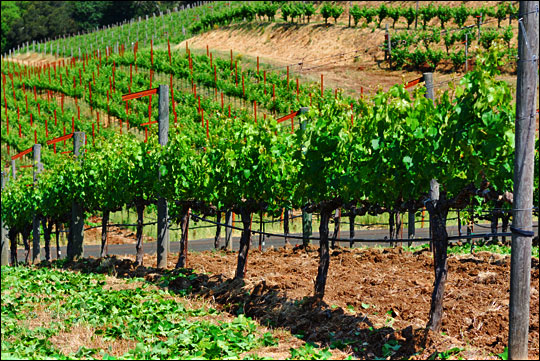Thanks to Proposition 2, Californians will soon phase out some of the most egregious confining animal conditions. However the rest of the country continues to utilize concentrated animal feeding operations for the production of meat, poultry and dairy products.
CAFOs are industrial facilities that are designed to produce the most amount of meat in the shortest amount of time. In practice this means confining animals tightly together, often in unsanitary conditions, without access to the outdoors. According to the EPA, CAFOs divide into small, medium or large distinctions depending on the number of animals these facilities are confining. What’s most interesting is that the “large” CAFOs are not restricted to an upper limit of animals. So, for example, a large CAFO raising cows has “1,000 or more” heads of cattle. For broiler chickens the number is an astounding “125,000 or more.” As far as I can tell, there is nothing to stop a large CAFO from having thousands or even hundreds of thousands of animals confined in the same small space.
The animal abuses associated with this type of confinement seem obvious. Cows, pigs, chickens, turkeys and other animals need the same type of space and fresh air that human beings do. Crowding them together and never letting them see the light of day is certainly inhibiting their natural inclinations as sentient beings. But we should care about CAFOs for reasons far greater than animal abuses, for they abuse our own environment and the health of our children.
This week, Stacy Sneeringer, a professor at Wellesley College, published research, which documented the impact of CAFOs on infant mortality, in the respected American Journal of Agricultural Economics. Sneeringer looked at a 15-year period between 1982 and 1997, analyzing data on a county level for the number of CAFOs and animal units. Controlling for a host of variables, she found that changes in animal units directly compared to changes in infant mortality. The results concluded that for a 100,000 animal increase in a county, there were 123 more infant deaths under the age of one per 100,000 births and 100 more infant deaths under the age of 28 days per 100,000 births. As well, the research suggests that a doubling of animal production induces a 7.4 percent increase in infant mortality.
Sneeringer recognized that this phenomenon is a result of air pollution, most likely from ammonia and hydrogen sulfide. These two gases are toxic pollutants that also contribute to greenhouse gas emissions. Hydrogen sulfide is also responsible for deaths annually as farmworkers enter poorly ventilated manure containment systems and die almost instantly. As the Pew Commission on Industrial Farm Animal Production indicated in their final report earlier this year, “facilities can be harmful to workers, neighbors, and even those living far from the facilities through air and water pollution, and via the spread of disease. Workers in and neighbors of [these] facilities experience high levels of respiratory problems, including asthma.” This is significant for policy since most of the regulations on CAFOs to date have been implemented under the Clean Water Act — not the Clean Air Act.
The research also looked at the percent change in animal units by county between the 15-year period. The results show what might be expected: low income and rural areas have been adversely impacted by CAFOs. The Northeast and upper Midwest had an overall decrease in CAFOs, while Appalachia, the Midwest, and Central California had significant increases. These facilities are one of the newest forms of environmental injustice.
This research is timely and important as we all look toward a new administration, and President-elect Obama decides who will help him run our country. Obama has openly stated that he wants strict rules on CAFOs to better regulate both air and water pollution. Of equal importance, is his stance on limiting Environmental Quality Incentives Program funding for large livestock operations, which currently allows huge CAFOs to receive as much as $450,000 a year. Instead, Obama supports “reinstating a strict cap on the size of the livestock operations that can receive EQIP funding so that the largest polluters have to pay for their own environmental clean up.”
It’s a big step in the right direction, but we shouldn’t stop there. Large CAFOs are disasters for this country. They pollute our air and water, taint our food supply, devastate rural communities and human health, and perpetuate animal abuses that the American people have clearly rejected. But CAFOs don’t have to be here. There are farmers throughout the country producing high-quality, grass-fed beef and animal products that are beneficial to our grasslands, kind to the animals, and profitable for rural residents. Let’s support them both economically and politically rather than give handouts to a system that so clearly is flawed beyond repair.



